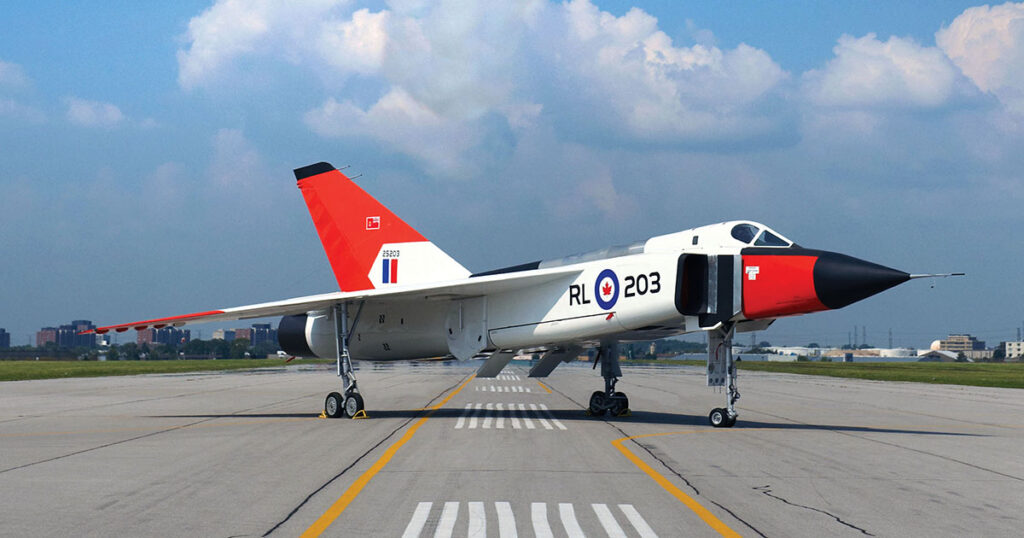
The Tupolev airliner rolled to a stop in Moscow on August 19, 1955. Aboard was KGB agent Evgeny Brik, back home for a vacation from his assignment in Canada. Glancing out a window, Brik saw a black limousine with curtained windows pull up and stop next to the airplane. “As he descended the steps leading from the aircraft he was astonished to see Nikolai Alekseyevich Korznikov step from the car,” wrote Donald G. Mahar in Shattered Illusions: KGB Cold War Espionage in Canada. Korznikov was a senior KGB officer who was responsible for the operations of KGB illegals all over the world. “Korznikov greeted him politely and motioned for him to enter the vehicle.”
Brik fought to remain calm. He knew that the most likely fate for a spy who provided information to a western intelligence service was likely a brutal interrogation followed by a bullet to the back of the head. He had reasons for concern. While living in Canada under the alias of David Soboloff, Brik had confessed to the Royal Canadian Mounted Police (RCMP) Security Service that he had been running a Soviet spy ring inside the top-secret Avro Arrow CF-105 interceptor program. He had requested asylum in Canada.
The KGB knew all this, because RCMP officer James Douglas Morrison had tipped them off in exchange for money to pay his gambling debts.
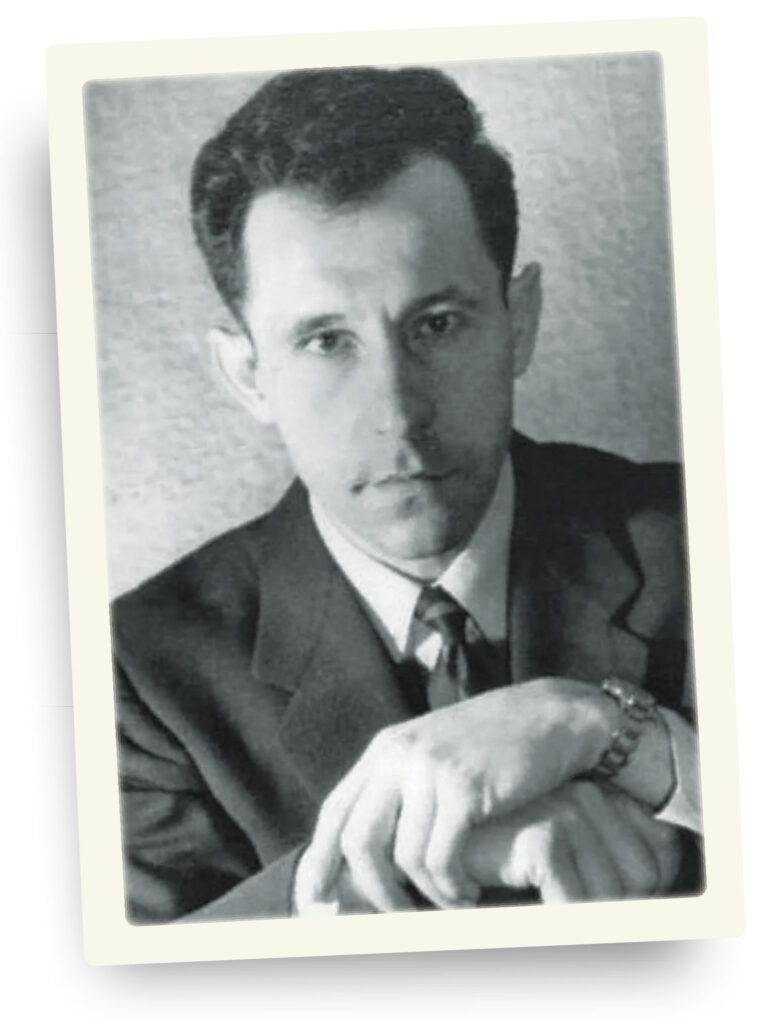
A.V. Roe Canada Ltd., a subsidiary of the British Hawker-Siddeley Group, was created in 1945 from a merger of Victory Aircraft and several other aircraft companies that had been established during World War II to produce warplanes for the conflict in Europe. A consortium of government and businesspeople set up a subsidiary company, Avro Canada, to design and build civilian jet transports and a jet interceptor. Avro Canada’s twin-jet CF-100 Canuck—Canada’s first homegrown combat aircraft—made its debut flight in January 1950, but the country’s military realized it needed a better interceptor than the subsonic Canuck to counter the growing Soviet threat in the wake of the USSR’s introduction of the long-range Tupolev TU-4 heavy bomber and the explosion of its own atomic bomb in 1949.
Design work began in 1953 on the airplane that would become the Avro Arrow and the Orenda PS.13 Iroquois engines that would power it, based on specifications provided by the government. “What the airstaff were asking for was the moon,” chief engineer Jim Floyd told author Greig Stewart in 1988. “In short, they required a two-place, twin-engined aircraft with all-weather reliability, long range, short take-off and landing, an internal weapons compartment as large as the bomb bay of a B-29, and a supersonic maneuverability of 2G at Mach 1.5 at 50,000 feet, without any loss of speed or altitude—a requirement which has been met by few, if any, service aircraft even to this day. In addition, it was to be guided by the most sophisticated automatic flight and fire control system ever envisaged.” When the Canadian government issued its operational requirements in 1953, a Royal Canadian Air Force evaluation team concluded that no aircraft then on the drawing boards could meet the required specifications. Avro Canada rose to the challenge with the Arrow, a delta wing, Mach 2-capable interceptor with what was then an advanced fly-by-wire system. The Arrow was envisioned to counter the threat of Soviet bombers armed with nuclear bombs flying over the North Pole to attack North America.
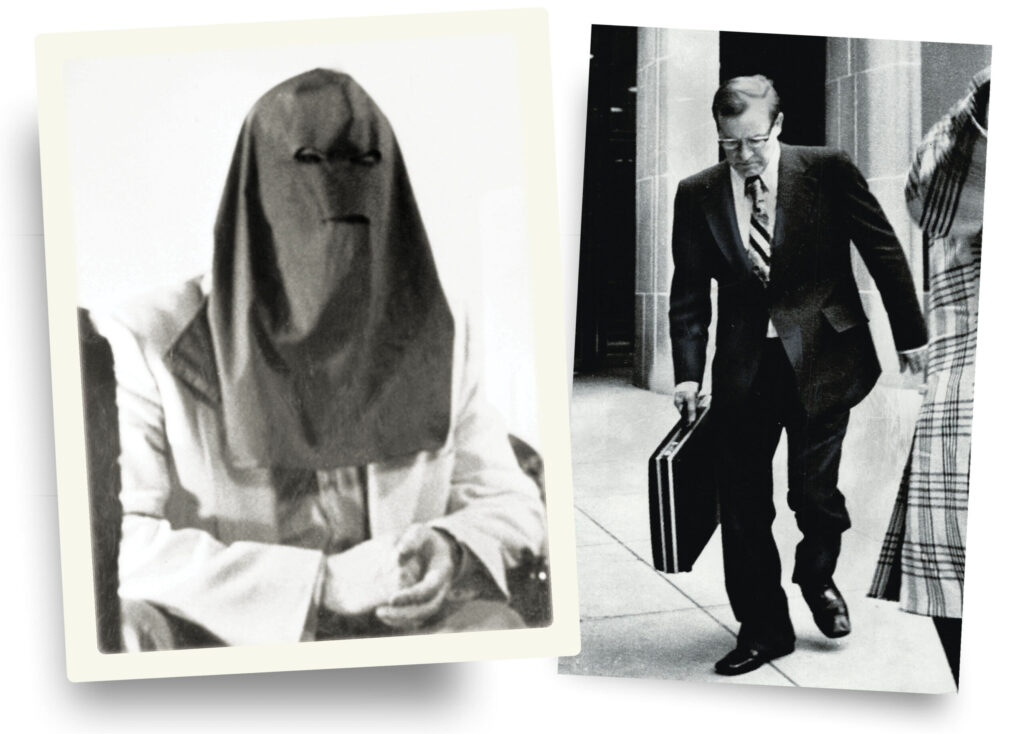
As America would be the Soviets’ main target for a nuclear attack, the United States supported Avro Canada throughout the Arrow’s design, testing and manufacturing stages. The assistance including providing 19 Pratt & Whitney J-75 jet engines, giving Avro Canada access to supersonic wind tunnels, lending it a Boeing B-47 Stratojet for flight testing the Iroquois as well as providing a research facility in Tennessee to test the engines. The U.S. also let Avro Canada use the missile launch facility at Wallops Island, Virginia, to test large free flight models of the airplane.
Avro rolled out the first CF-105 on October 4, 1957. As though to underscore the Cold War tensions behind the airplane, that was also the day the Soviet Union launched Sputnik 1, the first artificial satellite. The Arrow, powered by the American Pratt & Whitneys, made its first flight on March 25, 1958, with the program’s chief test pilot, Janusz Żurakowski, at the controls. The first CF-105 was followed by four more, all fitted with the American engines. With test pilot Spud Potocki flying, Arrow 25204 reached a speed of Mach 1.98 (1,320 mph) while in a 60-degree climb on November 11, 1958. Potocki pronounced himself impressed, telling the authors of the 1980 book Avro Arrow, “I’m not sure that the average person would realize just how really advanced the Arrow was…. The Arrow ‘fly by wire’ control system was easily the most advanced in the world in 1958.”
Avro expected the airplane’s performance would only improve once equipped with the homegrown engines. The Iroquois was intended to be in the 30,000-lb. thrust range (compared to the 26,500 lbs. delivered by the Pratt & Whitneys on afterburners) and was being designed by Orenda, the gas turbine division of Avro Canada. The first example of the MK 2 Arrows, RL-206, was intended to receive the Iroquois engines and was nearly complete on the day the program was canceled in 1959.
But by then, it appears the Arrow had already been hopelessly compromised by Soviet spies.
In 1945 Canadian intelligence had received a wake-up call about the dangers of Soviet espionage. That September, Igor Gouzenko, a 26-year-old cipher clerk at the Soviet Embassy in Ottawa, defected and turned over files that laid bare evidence of massive Soviet infiltration of western intelligence services, as well as secrets from industrial, political and research circles. As individuals identified in Gouzenko’s documents were arrested and cross-examined, their testimony revealed links to other Soviet spies, who were then picked up secretly to avoid tipping off the embassy.
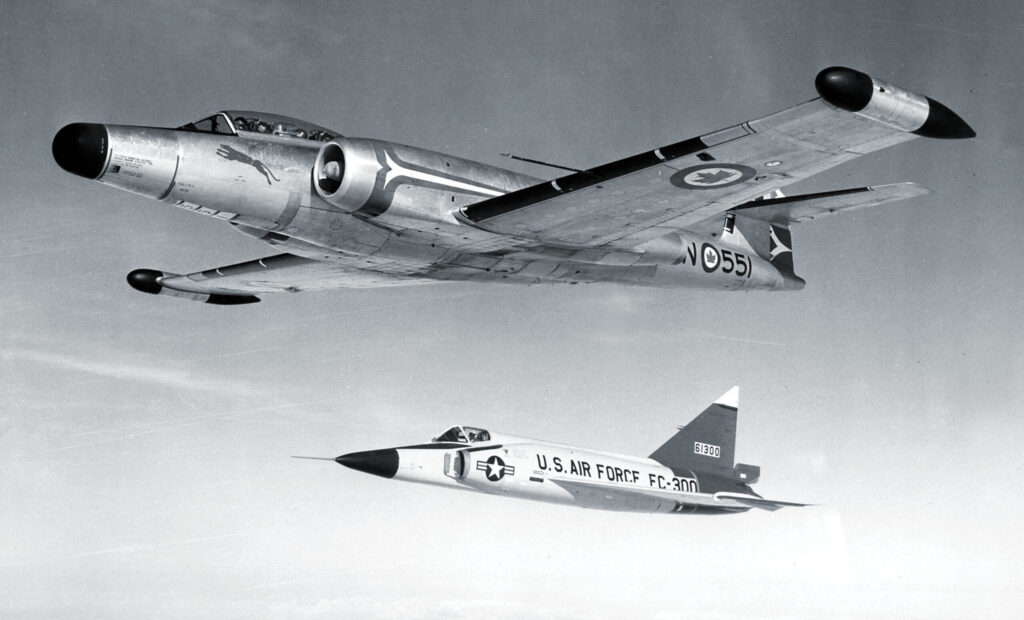
Gouzenko’s information revealed the extent of the Soviet desire to unlock secrets of U.S. and Canadian defenses. One spy exposed by Gouzenko’s information had given the Soviets samples of U-235 bomb grade fissionable material as well as many nuclear secrets. Another man the security services arrested was a member of the Canadian parliament.
The Soviets added one more spy to their Canadian roster in 1951, when Evgeny Brik arrived. He had lived in New York City as a child, but returned to the USSR during World War II with his father, a former official with the Soviet trade mission. Trained by the KGB as a deep cover agent and given the identity of David Soboloff, Brik had instructions to establish an identity in Canada in preparation for an intended move to New York City to serve as the radio and signals communication operator for established KGB illegal Rudolf Abel.
Instead, Brik fell in love with the wife of a Canadian soldier and persuaded his superiors that it would be best for him to stay in Canada. In 1953 he went to the RCMP, revealed himself as a Russian spy and requested asylum in Canada. He agreed to serve as a double agent. His handler would be Terry Guernsey, the RCMP officer in charge of counterintelligence operations.
One of the Soviet spies Brik handled had the code name “Lind”—his true identity remains unknown—who was running spy rings in Avro Canada and at the Orenda engine plant. In 1955, with Guernsey’s knowledge, Brik handed his KGB handler more than five pounds of top-secret documents from Avro that he had obtained from the mysterious Lind. The haul included airframe and engine drawings for the Arrow as well as photographs and test data. Guernsey allowed the document transfer to take place because the RCMP wanted to observe the spy cell in operation before they shut it down, even if it meant compromising the Arrow. According to Guernsey, that wouldn’t matter. Someone in government had told him that the Arrow “would be obsolete in few years anyway.”
If there’s any doubt that the Arrow was hopelessly compromised, in October 1958, only seven months after the Arrow’s first flight, Avro Canada’s Jim Floyd was asked by his boss, Fred Smye, to arrange a tour for a group of Soviet aircraft engineers. Smye told Floyd to show the Soviets Avro’s design and manufacturing facilities and “answer any questions they may have.” At first, Floyd said, he refused, but Smye told him he would find someone else to give the briefing. Floyd asked if he should withhold performance specifications. “They already know,” responded Smye. In the end, Floyd gave the tour of the Arrow facilities, keeping his information as vague as possible, and Orenda Engines’ chief engineer, Charles Grinyer, gave a tour of the engine plant. It is almost certain that the order came down from Canada’s Department of Defence Production. Why this was allowed to happen remains a mystery.
The announcement came only a few months later, at 11:00 a.m. on February 20, 1959, in the massive Avro Canada Plant beside what is now Toronto Pearson International Airport, and in the Orenda Engine plant across the road. All work on the Arrow and Iroquois engines was to stop. The government had canceled the program.
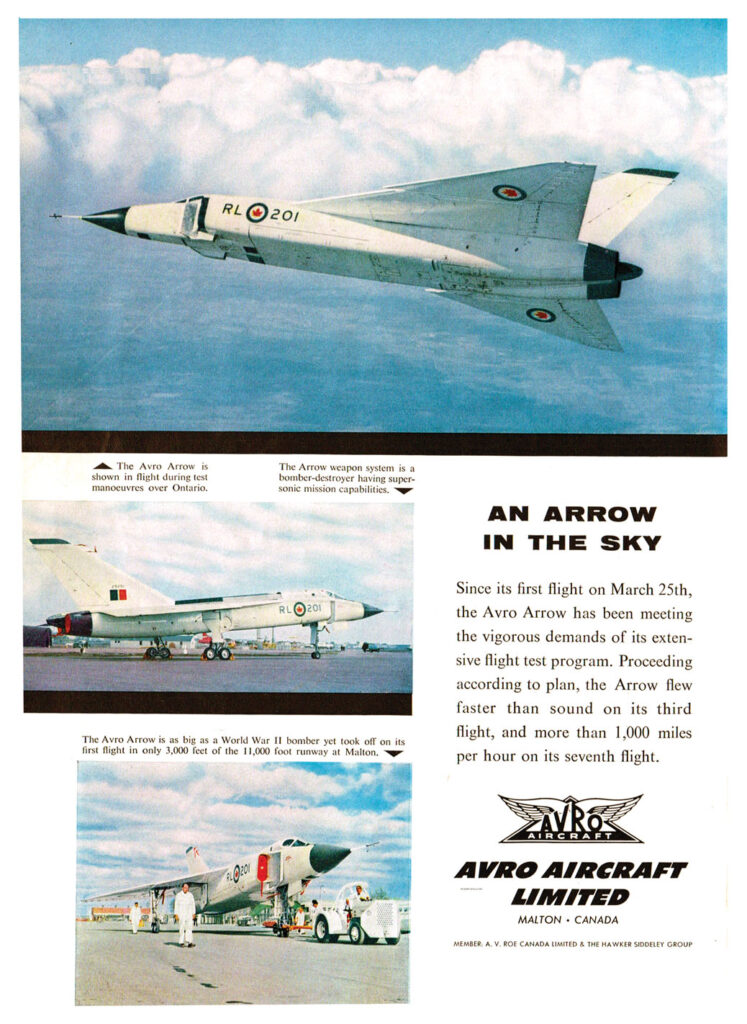
Two months later the five complete and flying Arrows and the 37 aircraft in various stages of assembly were ordered destroyed, along with all test data, engineering drawings and all Orenda Iroquois engines and parts. Avro couldn’t survive the cancellation, which threw thousands out of work and forced a substantial talent drain to the United States and other countries. A.V. Roe Canada was out of business by 1962.
The cancellation of the Arrow remains a controversial subject in Canada. It appears that some members of the government felt the program was taking too big a bite out of the defense budget at the expense of the army and navy. Some have speculated that the United States, preferring that Canada purchase American aircraft, was behind the cancellation, but that seems unlikely based on the amount of support it had already provided. It’s also possible the Soviets had other people inside the government who were working to influence the program’s cancellation.
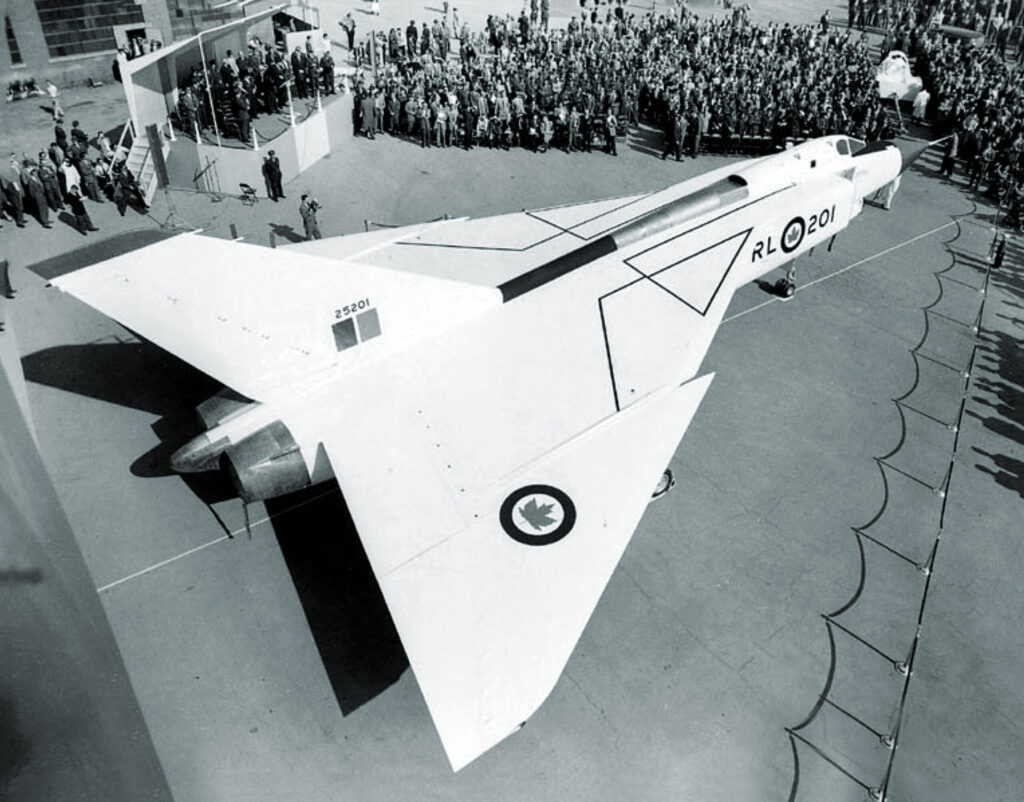
Hoping to keep his team intact, in the summer of 1959 Floyd arranged to have around 30 of his best engineers go to the United States to work on the space program. Floyd himself left Avro to work on the British-French Concorde project. Without the Arrow to replace it, the CF-100 remains to this day Canada’s only mass-produced, homegrown interceptor.
After he returned to Moscow, Evgeny “David Soboloff” Brik endured 15 years in a Soviet prison, some of that time in solitary confinement, followed by several more years in a work camp. Brik did not know why he escaped execution but felt that it may have been due to the turmoil created by the death of Stalin two years before his trial. Perhaps high-ranking KGB officers did not wish to be associated with an exposed operation or felt that an execution may have focused too much attention on them. In 1991 Brik showed up at the British Embassy in Lithuania and asked if he could return to Canada. He lived in Ottawa until his death at the age of 89 in 2011.
Did the Soviets incorporate any of the knowledge they gained from the Arrow into their own designs? It’s possible. For instance, they may have pirated some of the Arrow’s boundary layer research and used it to design air intakes for their own aircraft, but the answer to that question—like the identity of the mysterious Lind—remains undetermined.
Little remains of the Avro Arrow today. Much that escaped destruction survived because Avro Canada employees removed parts from the company without authorization. Today, the Canada Aviation and Space Museum in Ottawa has an Arrow nose section, along with other bits and pieces and an Iroquois engine. Those artifacts, along with a Pratt & Whitney J-75 and a damaged Iroquois engine at the Canadian Warplane Heritage Museum in Hamilton, Ontario, are almost all that remains of an aircraft that by many accounts would have put Canada in the forefront of military aviation—and as a result became the target of Soviet espionage.